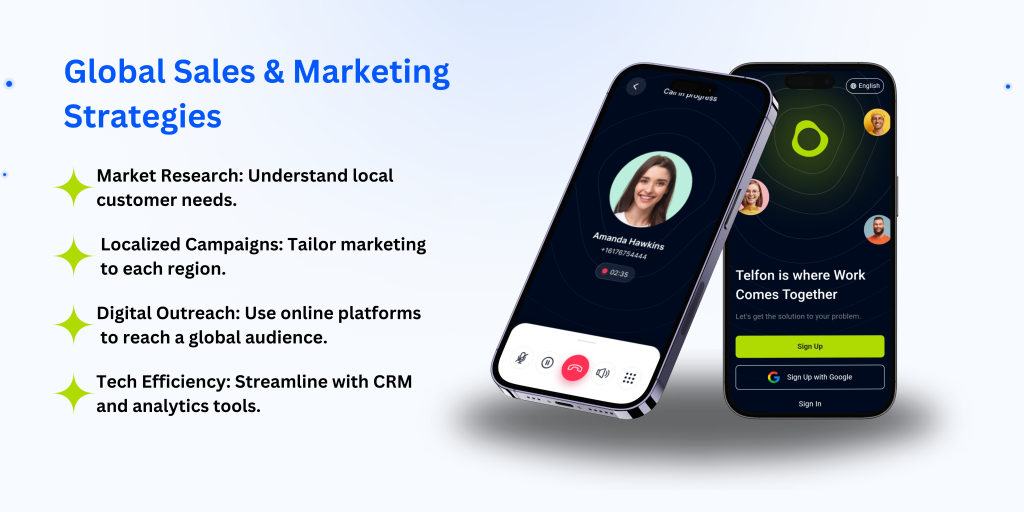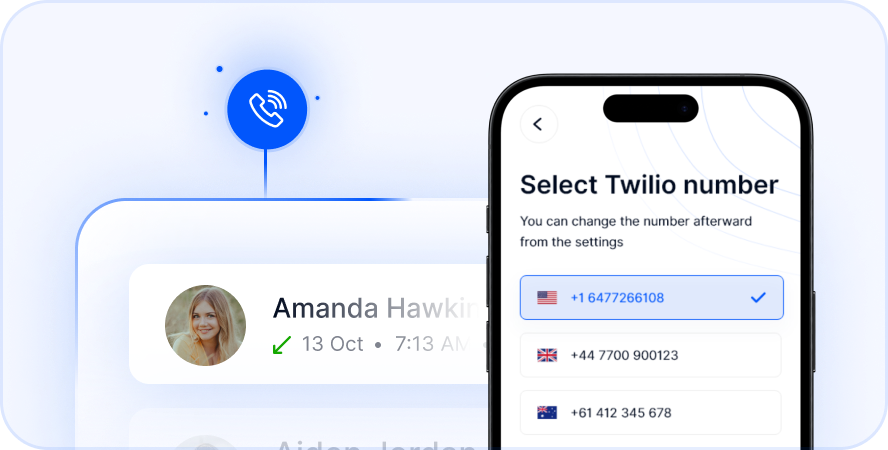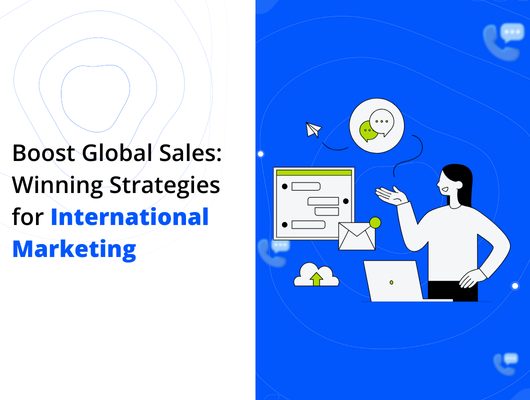
Introduction: Building a Global Presence in Sales and Marketing
Building a global presence in sales and marketing is a significant step. It requires more than just translating your website. Companies must bridge geographical and cultural divides effectively. Mastering global strategies helps businesses of all sizes achieve sustainable growth. It allows you to enter new markets and build lasting customer relationships.
The international market has unique challenges. These include cultural differences and intense competition. Businesses that adapt can thrive globally. Understanding these differences is vital. It helps you connect with diverse audiences. This blog explores powerful strategies for global sales and marketing. We will look at leveraging technology and understanding local needs. You can gain deeper insights into navigating global markets by exploring resources like HubSpot’s guide to international marketing strategies.
Understanding Global Expansion in Sales and Marketing
Expanding your business globally means more than selling products abroad. It involves navigating foreign markets. You must understand local cultures and consumer behavior. Effective communication at a local level is essential. This tailored approach reduces entry barriers. It minimizes risks for your business. It also increases your chances of success internationally. Developing a clear understanding is the first step. It sets the foundation for your global growth.
Crafting Your Global Sales and Marketing Strategy
A global strategy is your roadmap. It aligns your efforts with international audiences. This blueprint guides your actions. It ensures consistency while allowing for local adaptation. Building this strategy requires careful planning. It involves several key stages. Each stage builds upon the last one. This process helps you connect with customers worldwide.
Deep Dive into Market Research
Global expansion starts with thorough research. You need to understand local needs and preferences. This includes demographics and buying habits. Learn about pain points specific to each region. Research helps you tailor your products and messaging. A strategy successful in one country might fail elsewhere.
Your research should cover several areas. Use tools and analytics to gather data.
- Market demand: Is there a real need for your offering?
- Competitive landscape: Who are your local competitors?
- Customer profiles: Who are your ideal customers in this region?
- Cultural and economic differences: How do local factors influence buying?

Customizing Offerings for Local Success
International customers often have unique preferences. Adjusting your product or service is crucial. This customization builds a stronger connection. It shows you value the local market. Consider languages, regulations, and payment methods. A software company might need local language options. They may also need to support different payment gateways.
Cultural nuances play a big role here. Tailoring your offerings helps your brand. It positions you as a trusted local provider. You become part of the community, not just a foreign entity. This builds trust and increases acceptance.
Implementing Localized Marketing Campaigns
Successful global growth needs localized marketing. Maintain your core brand identity. However, adapt campaigns for local audiences. Adjust language, visuals, and messaging. Use advertising channels popular in the region. This makes your marketing more relatable.
Key areas for localization include:
- Social Media: Use platforms popular locally (e.g., WeChat, VKontakte).
- Content Marketing: Create content that resonates with cultural values.
- SEO: Research keywords for each country and language. Optimize for local search engines like Baidu or Yandex alongside Google.
This approach ensures your message connects deeply. It respects local customs and preferences.
Essential Technology and Tools for Global Reach
Technology plays a significant role in international growth. Sales and marketing tools maximize your outreach. CRM systems manage customer relationships globally. Email automation platforms help you scale communication. Analytics dashboards provide vital insights. These tools make international efforts more efficient. They help you manage complex operations across borders.
How Virtual Numbers Enhance Global Communication
Effective communication drives success in international markets. A tool like Telfon offers a solution. It helps businesses expand globally. Telfon provides virtual phone numbers for many countries. This keeps you connected with international clients and partners. The platform integrates with various communication tools. It suits businesses needing streamlined global contact.
Using a virtual number from Telfon offers several benefits. You can set up local numbers quickly. This provides a trusted local presence. It helps build strong relationships with clients globally. You can make international calls affordably. Features like call recordings help optimize strategies. You can also integrate with tools like WhatsApp.
Key Components of a Winning International Marketing Plan
A successful international marketing plan combines many elements. These components must work together seamlessly. Focusing on these areas improves your chances globally. They ensure your efforts are targeted and effective. This integrated approach yields the best results.
Mastering Content Localization
Localized content boosts your international success significantly. This is more than simple translation. It means understanding local dialects and culture. Include local humor and preferences where appropriate. Content should feel native to the audience.
Consider these localization tactics:
- Create region-specific website pages.
- Develop localized blog posts relevant to local interests.
- Use images and colors with positive local connotations.
- Adapt promotions for local festivals or holidays.
Authentic localization builds trust. It makes your brand feel familiar.
Strategic Partnerships and Local Influence
Consumers often trust local influencers and partners more than foreign brands. Collaborating with local experts helps you reach audiences quickly. Partnerships with established local companies lend credibility. This is particularly true in new markets.
For example, partnering with a local expert validates your brand. An influencer can introduce your product to their audience. This leads to increased exposure. It also drives customer acquisition. Choose partners whose values align with yours.
Optimizing for International SEO
Your website’s SEO needs global focus. Research keywords for each country and language. Implement geo-targeted content on your site. Ensure your site is visible on local search engines. This includes Baidu, Yandex, and Google. International SEO drives organic traffic from target regions.
Proper technical setup is also key. Use hreflang tags correctly. Structure your website for international audiences. This guides search engines to the right content. It improves your visibility globally.
Effective Email Marketing for Global Audiences
Email marketing remains powerful for driving international sales. Segment your global audience carefully. Personalize email campaigns based on location and preferences. This builds stronger relationships with customers worldwide. It can increase conversion rates significantly.
For successful global email campaigns:
- Send emails during local business hours.
- Use A/B testing to refine strategies for different markets.
- Offer region-specific deals and promotions.
- Ensure content is fully localized and culturally appropriate.
Practical Communication Tips for Global Sales
Understanding communication nuances is key for international sales. Phone number formats vary greatly. Knowing the best time to call is also crucial. Attention to these details enhances your outreach effectiveness. It shows professionalism and respect for international clients.
International Phone Number Formats
Countries use different phone number formats. Always verify the correct format before calling. Using the wrong format can cause calls to fail. This leads to frustration and delays.
Here are typical examples:
| Country | Format Example |
|---|---|
| USA | +1 followed by area code and number (+1 (XXX) XXX-XXXX) |
| UK | +44 followed by area code and number (+44 (XXX) XXXX-XXXX) |
| India | +91 followed by area code and number (+91 (XXX) XXXXX-XXXXX) |
Using the correct international phone number format ensures smooth connections.
Calling International Clients at the Right Time
call. However, it’s generally advisable to contact international clients during their local business hours (between 9 AM and 6 PM). Understanding local working hours will improve the effectiveness of your outreach.

Frequently Asked Questions
Q1: What is the difference between translation and localization?
A: Translation changes text from one language to another. Localization adapts content and products for a specific market’s culture, customs, and technical standards. It includes more than just language.
Q2: How can I research international markets effectively?
A: Use government trade resources, market research reports, and local partners. Analyze online behavior and search trends. Conduct surveys or focus groups with local consumers.
Q3: Why are virtual phone numbers important for global sales?
A: They provide a local presence without a physical office. This builds trust with international customers. They also offer affordable international calling and messaging. They often come with features helpful for global communication management.
Q4: How do I ensure my marketing is culturally appropriate?
A: Work with local experts or agencies. Research local customs, values, and sensitivities. Get feedback from people in the target market before launching campaigns.
Achieving Global Expansion Success
Effective global expansion combines strategic planning and thorough research. It requires strong technological support. Developing a tailored strategy for each market is key. Leveraging tools like virtual phone numbers is vital. Adjusting your marketing efforts to fit local needs is crucial. This allows your business to expand successfully across borders.
Success in global sales and marketing depends on relationships. Build strong connections with international clients. Understand cultural differences deeply. Create personalized experiences for each market segment. Implement effective strategies today. This is how you start growing your global footprint.









